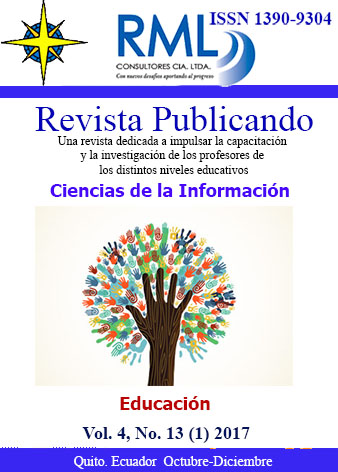Resumen
Comparative idioms are one of the actively developed problematic spheres of phraseology. At the moment, detailed consideration is being given to the cultural and structural aspects of the analysis of comparatives. In the present article the author analyzes stylistic features of comparative idioms in the micro-field "slow-wittedness", and their functioning in art texts. It has been revealed that such comparisons are not frequent in artistic texts in view of stylistic limitation of comparisons (often they are dubbed colloquial, contemptuous). Specific standards of comparison are established: these are often the names of animals or a tree, its parts and wooden products. The reason of such a choice of standards of comparison is linked with the features of the national world view of the Russian people at early stages of development. Estimations as to when comparative idioms of such semantics came into use are often placed at the 19th century, less frequently at the 20th. Special attention is paid to the subject comparative connection. Generally, they serve as the characteristic of the representatives of the masculine gender. The characteristic of representatives of the feminine gender is met quite seldom and demands a change in the standard of comparison. The descriptive method serves as a key method of linguistic analysis in work as it allows the analyzing of the specifics of functioning of a comparative idiom in context and opens implicitly the presented linguo-culturological potential of comparative idioms
Referencias
ArsentevaE.E., ArsentyevaY.S., 2016. Discoursal Analysis of Phraseological Euphemisms: Experimental Data in Teaching English//The Social Sciences 11(6), 1042-1048 pp.
Bochina T.G., Jing Jing, YapparovaV.N. 2016. Stylistic devices of contrast in poetry of Alexander Pushkin and Evgeny Baratynsky. Journal of Language and Literature.Vol. 7. No. 1.pp. 194-198.
BochinaT.G., Miftakhova A.N. 2014 Gender interpretation of an image of the man in the RuNet//XLinguae European Scientific Language Journal. - 2014, - V. 7, - No. 1, - pp. 2-14.
Fernando C.1996. Idioms and Idiomaticity. Oxford. University Press.256 pp.
Gibbs R.W. 1994. The Poetics of Mind: Figurative Thought, Language and Understanding. Cambridge University Press.527 pp.
Gilazetdinova G. K., Edikhanov I. Z., Aminova A.A. 2014. Problems of Ethno-cultural Identity and cross-language communication. Journal of Language and Literature.Vol.5 (3) .Pp.39-42.
Kunin A.V. 1996. The Course of Phraseology of Modern English. Moscow. Fenix.123 pp.
Melerovich A.M., Mokienko V.M. 2001. Phraseologisms in Russian Speech. Russian Dictionaries. Astrel. Moscow. 210 pp.
Nacional'nyy korpus russkogo yazyka. (Russian Language national corpus). URL: <http://ruscorpora.ru/> (accessed 17.04.2017). (In Russian)
Ogol'cev V.M. 2015. Slovar' ustoychivyh sravneniy russkogo yazyka. AST. Astrel. Moscow. 917 pp.
Ozhegov S.I. Tolkovyy slovar russkogo yazyka.//URL <http://slovarozhegova.ru/word.php? wordid=32509> (date of the address 10.11.2016)
Safin I.Kh., Byckova T.A., Kolosova E.I. 2016. Linguocultural semiotic concept "Language" in Russian, Polish and English Languages. Journal of Language and Literature. Vol.7. No. 2. pp.237-240.
Spiridonnov A.V., Khabibullina E.V. 2016. Occasional Derivation as a Way of Era Language Stylization in V. Aksyonov's novel "Voltairiens and Voltairiennes". Journal of Language and Literature.Vol.7.No.1. pp.219-222.
UkhanovaT.V., Kosova V.A. 2016. Russian Adjectives with Confixes from an anthropocentric viewpoint. Journal of Language and Literature.Vol.7.No.2. pp.386 - 331.
Usted es libre de:
Compartir — copiar y redistribuir el material en cualquier medio o formato
Adaptar — remezclar, transformar y construir a partir del material
La licenciante no puede revocar estas libertades en tanto usted siga los términos de la licencia
Bajo los siguientes términos:
Atribución — Usted debe dar crédito de manera adecuada, brindar un enlace a la licencia, e indicar si se han realizado cambios. Puede hacerlo en cualquier forma razonable, pero no de forma tal que sugiera que usted o su uso tienen el apoyo de la licenciante.
NoComercial — Usted no puede hacer uso del material con propósitos comerciales.
CompartirIgual — Si remezcla, transforma o crea a partir del material, debe distribuir su contribución bajo la lamisma licencia del original.
